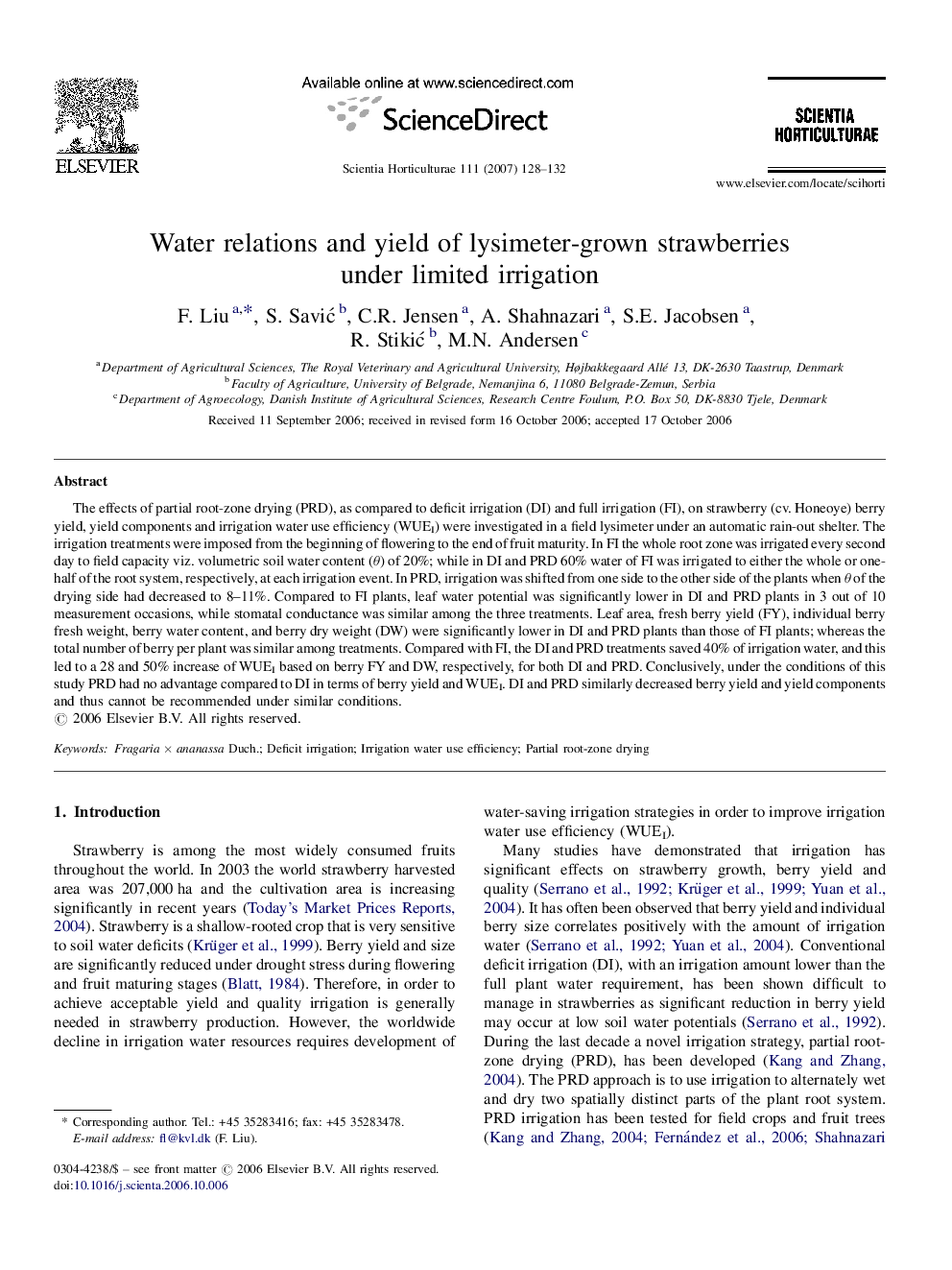| Article ID | Journal | Published Year | Pages | File Type |
|---|---|---|---|---|
| 4570100 | Scientia Horticulturae | 2007 | 5 Pages |
The effects of partial root-zone drying (PRD), as compared to deficit irrigation (DI) and full irrigation (FI), on strawberry (cv. Honeoye) berry yield, yield components and irrigation water use efficiency (WUEI) were investigated in a field lysimeter under an automatic rain-out shelter. The irrigation treatments were imposed from the beginning of flowering to the end of fruit maturity. In FI the whole root zone was irrigated every second day to field capacity viz. volumetric soil water content (θ) of 20%; while in DI and PRD 60% water of FI was irrigated to either the whole or one-half of the root system, respectively, at each irrigation event. In PRD, irrigation was shifted from one side to the other side of the plants when θ of the drying side had decreased to 8–11%. Compared to FI plants, leaf water potential was significantly lower in DI and PRD plants in 3 out of 10 measurement occasions, while stomatal conductance was similar among the three treatments. Leaf area, fresh berry yield (FY), individual berry fresh weight, berry water content, and berry dry weight (DW) were significantly lower in DI and PRD plants than those of FI plants; whereas the total number of berry per plant was similar among treatments. Compared with FI, the DI and PRD treatments saved 40% of irrigation water, and this led to a 28 and 50% increase of WUEI based on berry FY and DW, respectively, for both DI and PRD. Conclusively, under the conditions of this study PRD had no advantage compared to DI in terms of berry yield and WUEI. DI and PRD similarly decreased berry yield and yield components and thus cannot be recommended under similar conditions.
